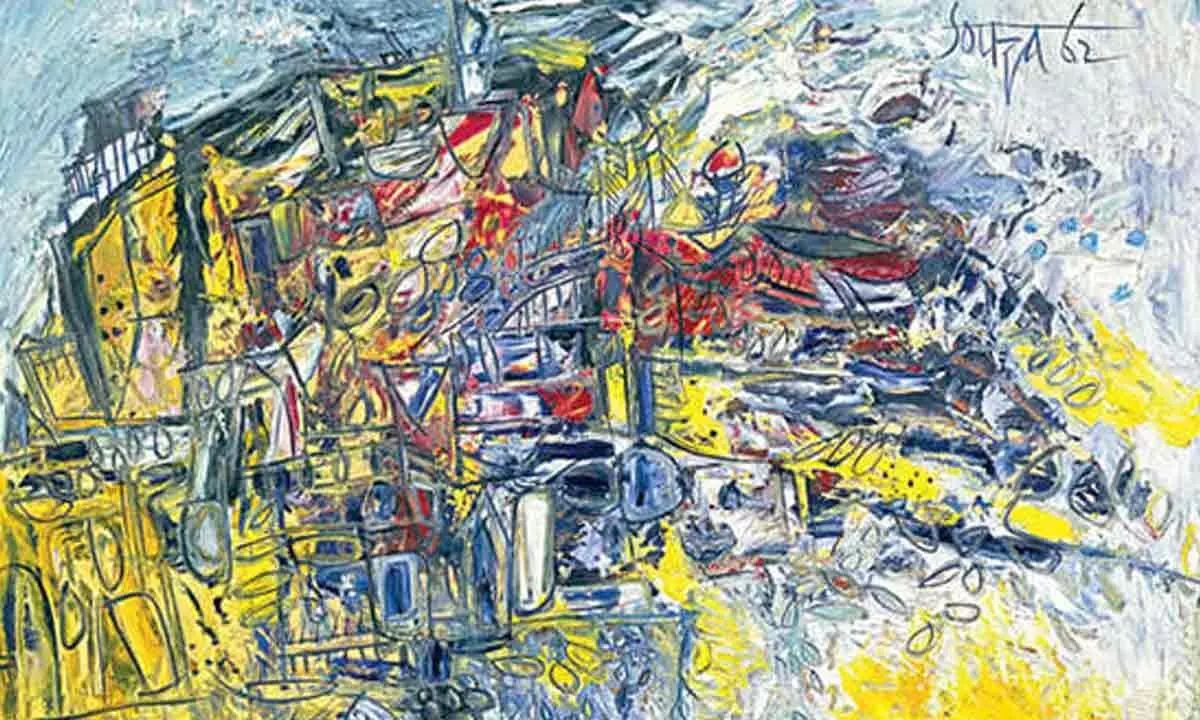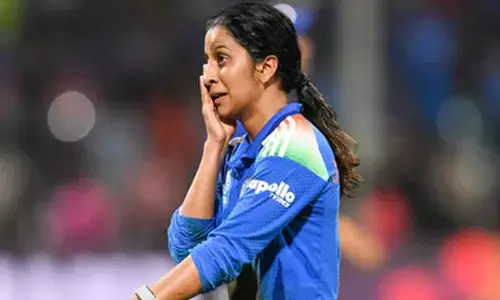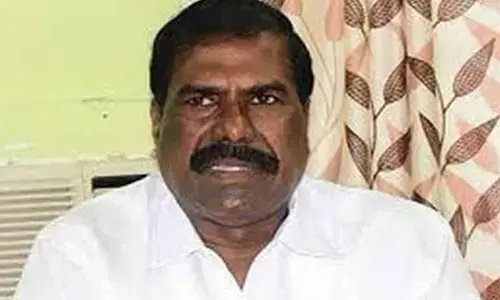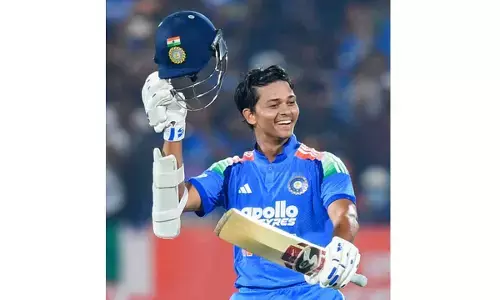How the progressive artists group revolutionised Indian art scene

How the progressive artists group revolutionised Indian art scene
The Progressive Artists’ Group (PAG) was formed in Bombay in 1947 by a group of young artists who aimed to break away from the academic tradition and establish a modern Indian art movement.
The Progressive Artists’ Group (PAG) was formed in Bombay in 1947 by a group of young artists who aimed to break away from the academic tradition and establish a modern Indian art movement.
Their works reflected a synthesis of Indian and Western influences and focused on social realism and contemporary issues. The PAG played a crucial role in shaping the identity of modern Indian art by introducing new techniques, styles, and themes.
Their work challenged traditional art forms and paved the way for future generations of Indian artists to explore their individual identities while embracing global influences.
The group was initially formed by artists such as F.N. Souza, S.H. Raza, M.F. Husain, K.H. Ara, H.A. Gade, and S.K. Bakre, and was later joined by more artists including, Tyeb Mehta, Ram Kumar, and Krishen Khanna among others.
In its upcoming Masters Legacy Auction, AstaGuru will present unique works by each of these artists.
It is not a common affair for the works of these such important artists to be showcased together on a platform, which makes this auction an exciting opportunity for art collectors. Here is a glimpse into some of the important works by these artists in the upcoming auction.
Landscape by FN Souza
The beautiful landscape work by FN Souza was executed in 1962 when the artist was living in London. Although the artist was not inclined towards abstraction, he seldom did create landscapes which were executed with spontaneity and dynamism. In this work, one can trace the sporadic brushwork painted with dark outlines and cross-hatch, the basis on which the architectural structures were composed. Hereby establishing the image purely based on the colour and textural contexts.
F N Souza’s paintings express defiance and impatience with a well-defined aura of artistic conviction, as he shunned the banality of societal norms. His works periodically reflected the influence of various schools of art: the folk art of his native Goa, the full-blooded paintings of the Renaissance period, the religious fervour of the Catholic Church, the landscapes of the 18th and 19th-century European art and the path-breaking paintings of the moderns.
Le Village by SH Raza
Executed in 1956, this work by Raza showcases a row of houses depicted with an eschewed approach. The rooftops of the structure collide with each other, imparting a certain degree of pictorial conflict. The artist had painstakingly achieved the feat of infusing his inner vision on the canvas. The year of the painting’s creation was of great importance, considering S. H. Raza had won the ‘Prix de la Critique d’Art award the very same year.
This validation indeed proved his mettle as an Indian artist who had attained a modern creative temperament. Soon thereafter, he gained a reputation in Paris, having been written about by Rudy von Leyden and the future Director of the Museum of Modern Art of Paris, Jacques Lassaigne.
The latter hailed him for not bringing and transferring his Indian exotic inferences; his strange unaccounted works were unconnected to any traditional form of art. Among the people to patronise his creations during the period were Jacques Lassaigne, Jean Bhownagary, Madame Rothschild, and celebrated writer Andre Maurois, amongst others.
Untitled by MF Husain
This work is a rendition of his famous horses, for which Husain was known across the globe. It was executed in 1990 with an acrylic on canvas palette dominated by the colour blue.
Husain was taken by the imagery of horses very early on in life, witnessing the tazias taken out during Muharram processions. Later, he travelled around the world seeing various horse iconography in different cultures including horse pottery by the Song dynasty in China and European artists such as Marino Marini. This would lead to him rendering powerful galloping horses. These horses served as symbols of grace and freedom and expressed both personal and universal emotions.
Untitled by KH Ara
The exploration of the nude form by K. H. Ara served as a path-breaking juncture in the idiom of modern art in India at the time. The presented lot is considered to be one of K H Ara’s most important paintings.
At the time of its creation, the artist had mastered his subject and had attained fluid control over his craft, which is evident in this artwork. It depicts a centrally positioned nude figure on a bed. The soft curves of the woman’s body are contrasted with an architectural background, executed with hatched strokes in tones of black and brown. The painting is also a glorious testimony to K H Ara’s masterly virtuoso over the delicate medium of paper.
Dancing Girl by Krishen Khanna
Executed in 1966 after his return to India, the presented lot titled ‘Dancing Girl’ is a striking and captivating work that commands attention with its bold lines and sweeping curves. Measuring almost six feet long, the oil on canvas work is executed in thick, confident strokes of different shades of brown against a sepia background. The gestural composition captures the fluid movements of a dancing figure, with the curves and lines evocative of the dancer’s body as it moves through space.
Despite its fragmented form, the painting conveys a sense of narrative and emotion, capturing the joy and passion of dance in a way that is both visceral and cerebral.
These works will be offered at AstaGuru’s upcoming ‘Masters Legacy’ auction, alongside several other rare and unseen works of art. Slated to be held on April 29-30, 2023, the auction presents a stellar selection featuring works by India’s most celebrated modernists, including Nicholas Roerich, MV Dhurandhar, MF Husain, SH Raza, FN Souza, Tyeb Mehta, HA Gade, Ganesh Pyne, Bikash Bhattacharjee, Jogen Chowdhury, Krishen Khanna, KG Subramanyan, KK Hebbar, Prabhakar Barwe, A Ramachandran, Himmat Shah, Rameshwar Broota, B Prabha, and T Vaikuntam.










